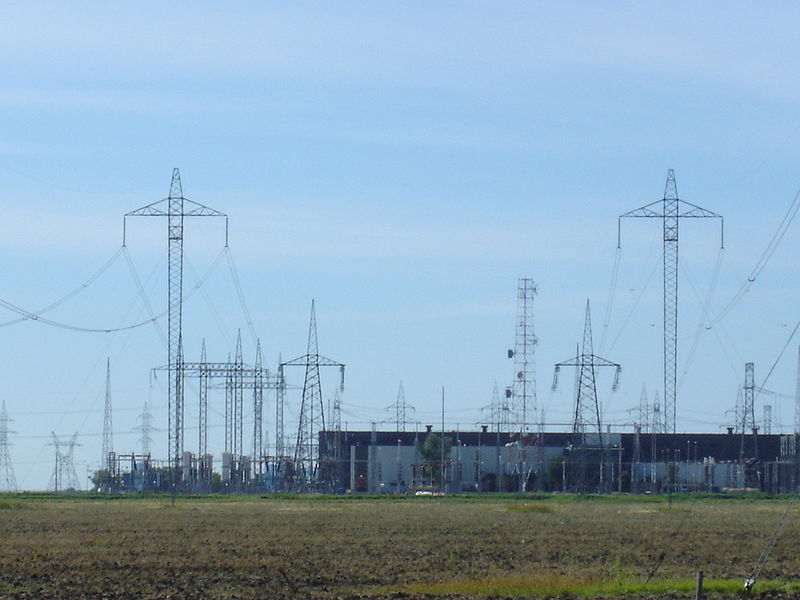
New energy infrastructure is needed to get power from where it hasn’t traditionally been produced
Dramatic changes are coming to the networks that bring energy from plants to homes, from the high-voltage lines that carry it over great distances to the house meters that measure how much consumers use, according to officials and industry experts.
The new “smart grid” will accept alternate ways of generating power and how and when consumers will use it, according to the Public Service Commission (PSC).
As an example of energy’s future, a major component of Michigan’s new emphasis on green energy will be generating wind power in the Thumb of the state, according to the PSC.
“That’s where the wind is, but it’s not where the people are,” said Judy Palnau, a PSC media and public information specialist.
Getting energy from places where it hasn’t traditionally been produced and integrating it into the power grid will require new and upgraded infrastructure, she said.
The distance between the Thumb and Michigan’s population centers is dwarfed by that covered by a major project being pursued by ITC Transmission, a Novi-based company.
The “Green Power Express,” will add transmission lines that would move 12,000 megawatts of power between the Dakotas, Minnesota, Iowa, Wisconsin, Illinois and possibly further east. Later, the project will also help improve the system in Michigan.
“We’re connecting very remote energy sources,” said ITC’s director of federal and legislative affairs, Nina Plaushin.
Plaushin said that large projects like the Express would make it much easier for companies interested in building wind power generation sites to connect to the grid.
“The way we plan for projects now is one at a time. We do the studies, then interconnect you, then move onto the next one,” she said.
That means the first companies into the field pay the most for the necessary infrastructure upgrades. That lets the subsequent entrants be “free riders” that get the benefits without contributing to their costs.
“Connecting at the grid one project at a time is proving to be an impediment,” she said.
The Express will have an additional benefit by relieving some of the strain on the existing power infrastructure in the states it crosses, Plaushin said.
Plaushin said that the project shouldn’t be seen as simply a “straw” carrying energy “from point A to B. We’re moving a lot of existing congestion off the lower-capacity grids, too.”
Also relieving congestion will be “smart meters,” or electric meters with advanced communications and measurement tools built in.
“Right now, we all have old-fashioned electric meters,” Palnau said. Smart meters would allow customers to use their appliances when demand for electricity is lowest and pay a lower rate.
According to Palnau, a key reason for the rush to roll out more advanced metering technology is the predicted rise of plug-in electric vehicles.
DTE Energy, one of the state’s largest power companies, says that such vehicles capturing even just 10 percent of the market would have a serious effect on the demand on the power grid, said Palnau.
Wind power and projects like the Express will be an important part of addressing that demand, she said.
“It’s envisioned we’d be mostly plugging in at night. Well — it’s windier at night,” she said.
According to Palnau, expanding the grid faces political challenges.
“We need standards and regulations in place, and we need to know how utilities will be compensated,” she said.
Many of these questions are the responsibility of the Federal Energy Regulatory Commission, which organized the Smart Grid Collaborative to start establishing rules and generating grants, she said.
According to the federal commission, the recently approved federal stimulus package provides funding for matching grants. It has just released formal criteria for companies that could apply for them.
ITC isn’t sure if it will seek those funds yet.
“We are looking into that and investigating what the criteria will be,” said ITC’s senior communications specialist, Cheryl Eberwein. “We have to take a look at the projects we’re pursuing and the parameters set forth by the government.” In some cases, projects that are ready to start construction, or “shovel-ready,” may be too far along to be re-tooled to fit those federal criteria.
Despite such recent moves in Washington, there are still difficulties with making the grid more accessible to remote generation, the PSC’s Palnau said.
“It’s going to mean more transmission towers on land. Are people going to be opposed to that? Very possibly,” she said.
ITC’s Plaushin agreed that’s a concern.
“There’re always issues about people not wanting transmission lines in their backyard,” she said. “One might presume those problems would be larger considering the scope of the project.”
Meanwhile, at some of the state’s smaller power companies, research into using “smart grid” technology has barely begun.
“We’re at the very preliminary steps, the very early stages,” said Ed Rice, executive director of Traverse City Light & Power.
“Everybody’s going to have to do something in the future, but it’s less of an urgent issue for us than for a larger utility,” Rice said.